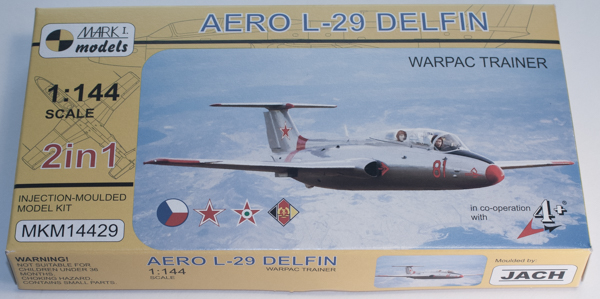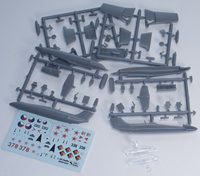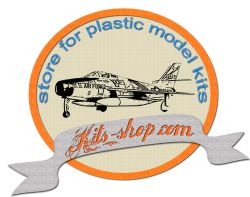
Mark I 1/144 L-29 Delfin "Warpac Trainer"
By Matt Bittner
Introduction
The L-29 Delfin was the winner in a competition between it, the PZL TS-11 and Yakovlev Yak-30 to become the primary jet trainer for Warsaw Pact countries. It served from 1963 with approximately 3600 built including a single-seat acrobatic version as well as a reconnaissance version known as the L-29R.
The Kit
The Mark I 1/144 L-29 Delfin is a "dual combo" meaning there are two kits to a box. For each Delfin there are 30 gray, injected plastic pieces (there are some pieces on the sprue not used for this version) and one clear injected canopy. Decals are for four aircraft:
- Aero L-29, 1st Fighter Regiment, Czechoslovak AF, České Budějovice AB, test flown at Malacky AB, May 1971 - finished overall in natural metal
- Aero L-29, Barnaul VVAUL AF Pilot Training Establishment, 59th Training Regiment, VVS USSR, Slavgorod AB, early 1980s - finished overall in natural metal
- Aero L-29, 101st Fighter Reconnaissance Regiment, Hungarian AF, Szolnok AB, the 1970s - finished in Dark Green, Brown and Light Grey on top with Light Blue undersurfaces
- Aero L-29, Fighter Pilot Traiing Regiment of the 'Franz Mehring' Officer School, East German AF, Bautzen AB, Autumn 1987 - finished in Dark Green and Brown on top and Light Blue on the bottom
Decals are nicely printed and appear in register.
Construction starts with the fuselage and cockpit. The cockpit consists of a tub - with molded-in seats - seat backs and the rear cockpit's instrument panel. The front instrument panel needs to be added separately to the fuselage and both panels have decals for the instruments. The only other items you'll need to add before closing up the fuselage halves are the exhuast pipe and five grams of weight.
 The wings are in pieces in order to capture the intakes and the wheel wells. After gluing these pieces together the wings can then be glued to the fuselage. In addition there is a piece for the rear of the cockpit added at this time along with the horizontal tail to the top of the vertical tail. You now have a complete airframe.
The wings are in pieces in order to capture the intakes and the wheel wells. After gluing these pieces together the wings can then be glued to the fuselage. In addition there is a piece for the rear of the cockpit added at this time along with the horizontal tail to the top of the vertical tail. You now have a complete airframe.
The other steps to the instructions have you add the landing gear and once separated into three pieces, if building the model gear-down (having them all together as a single piece makes it easy to build the model gear-up), the main landing gear doors can be added as well. In addition the nose landing gear door is a single piece if wanting the model gear-up, but need to be separated in two for building it gear-down.
The last instruction step has you add whatever external stores you want, choices being bombs, external fuel tanks or what appear to be gun pods.
Conclusion
This is an excellent example of the L-29 in 1/144, one definitely worth picking up.
Plenty of thanks goes to Kits-Shop for sending the review Delfin.

